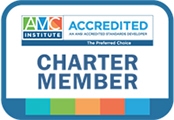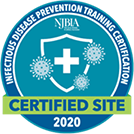In last week's blog, I wrote about Shar McBee’s influential work on volunteer leadership, To Lead is to Serve — How to Attract Volunteers & Keep Them, in which the author offers some unique, simple ideas for growing an organization’s leadership. In her book, McBee skillfully differentiates between management and leadership. Truly, to lead is to serve. This book tells how a real bonus is that many of the ideas can be implemented immediately and individually.
Let’s pick up where we left off.
For longer meetings that cannot be avoided, try using a facilitator who can help you conduct meetings where the results matter. That way, you can participate, rather than spend your time managing the meeting. A good facilitator will know group decision-making processes that move your meeting toward results everyone supports.
Clear out the clutter of any past negative vibes. Make the meeting space welcoming and be positive. Think of a board chair whose organization has fallen on lean times, mostly due to the economic recession. He sought out a consultant for some advice on what to do to begin fixing the problem. He figured the advice would come in the form of how to cut expenses and increase revenues. Instead he was somewhat stunned when the consultant told him to treat his fellow board members like his own siblings, the thinking being that he could not turn around the association externally until he got it together internally. So, he began focusing on the board’s morale rather than just the bottom line. In turn, he attracted the loyalty and commitment of his fellow board members and soon enough, things turned around for the association. Think about how this advice translates to the boardroom for your organization.
Think of your mind as an empty glass. As we experience different things, our lives become those things and the glass that is our minds begins to fill up. If you believe in this truism, McBee argues that we should, in essence, think happy, productive thoughts. In other words, change your mind no matter what the situation, and reflect a positive attitude. This will inspire people. For your association, this will attract new leaders, the critical lifeblood of any organization. As a leader, remember that the organization you lead reflects how you think, your attitude and the way you carry yourself. In order to be a great leader, you must inspire others to see things that you see, be enthusiastic about what you do.
Encourage your fellow board members to do the same. Reward people for the most creative ideas, especially those that make your organization more profitable or make a particular job that nobody wants to tackle a little bit easier. This process will lead to a stronger team atmosphere in the board room.
And building a better, happier, more creative team can go a long way toward making you a more successful leader.
Photo credit:Ben Terrett / Foter / Creative Commons Attribution-NonCommercial-NoDerivs 2.0 Generic (CC BY-NC-ND 2.0)
Photo credit: Be-Younger.com / Foter / Creative Commons Attribution-NonCommercial-ShareAlike 2.0 Generic (CC BY-NC-SA 2.0)




